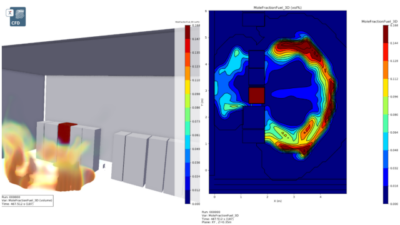Casinos and resorts are designed for fun and relaxation, but with such projects becoming increasingly complex and high-tech, engineers charged with tackling these structures have challenging work ahead of them in regards to sustainable buildings and energy efficiency.
Respondents
Brant Dillon, Director of MEP, Mortenson Construction, Minneapolis
Matt Dolan, PE, LEED AP, Senior Design Engineer, Southland Industries, Las Vegas
Jeffrey S. Grove, PE, Director, JENSEN HUGHES, Las Vegas
Ronald R. Regan, PE, Principal, Triad Consulting Engineers Inc., Morris Plains, N.J.
Mark Richter, PE, LEED AP, Partner, National Residential & Hospitality Practice Leader, AKF Group LLC, New York City
Gregory K Shino, PE, Technical Director of Fire Protection Engineering, NV5, Las Vegas
Toby White, PE, LEED AP, Associate, Sr. Fire Engineer, Arup, Boston
CSE: What unusual systems or features are owners requesting to make hotels, resorts, or casinos more energy-efficient?
Regan: Based on available space, roofs/carports/surrounding land, the primary offshore request is solar. When economics make sense, BESS is requested. When used as a possible standby/emergency source, CHP units are the next favored request. Lighting systems that account for ambient light are almost a standard with most operators. In offshore projects, depending on project size, thermal hot-water systems are an integral part of their design.
CSE: What types of renewable or alternative energy systems have you recently specified to provide power in hotels, resorts, or casinos? This may include photovoltaics (PV), wind turbines, etc. Describe the challenges and solutions.
Richter: We recently completed a project for Park Hyatt New York at One57 in which we incorporated a microsteam turbine unit to produce both reduced-pressure steam demand and electric power as the output to serve the hotel’s needs. The building is served by the District Steam and Electric utility. The packaged steam turbine, with electrical induction generator, was used to reduce the utility’s steam pressure from 180 psig to 60 psig and produce 460 V, 3-phase power at a maximum power output of 275 kW. The unit is installed in a parallel arrangement to the hotel’s main pressure-reducing valve station and is operated in a base-loading scenario as the lead steam supply to the building. The steam is used year-round for hotel laundry operations and domestic water heating during the summer and for the inclusion of space heating and humidification during the winter season. The electrical output feeds a main hotel switchboard to supplement the building’s main power around the clock. The system, as installed, will provide continuous as well as annual savings for the life of the building.
Regan: We designed a renewable energy boutique hotel on a small island in the Caribbean. The developer/operator wanted to maximize renewables. They first installed a PV system with BESS. This was used to power the man-trap for the workers and the plant security lighting. During the day, diesels were used for construction power and, if necessary, to help charge the BESS. At the final stage, additional PV was added to the structure. Seventy-five percent of the time the hotel is completely powered by renewable energy. During heavy seasonal loading or bad weather, the diesel automatically starts to make up for any shortfalls.
CSE: How has the demand for energy recovery technology influenced the design for hotels, resorts, or casinos?
Dolan: For Las Vegas-based hotels and casinos, heat recovery is typically employed as required by the energy code or LEED certification. This includes guest room ventilation/exhaust systems and smoking casino spaces where high percentages of outside air are used to dilute the smoke and create a better indoor environment. Energy recovery is beneficial in all locations, but its effect is diminished some in Las Vegas with its especially dry climate and lower outdoor-air enthalpy as compared with high-humidity areas, such as Macau. The types of airside energy recovery employed for these projects include total enthalpy heat wheels, sensible plate heat exchangers, or runaround coils with a dedicated closed-loop piping/pumping system between outside air and exhaust airstreams. Depending on the project budget and space constraints, all three of these technologies can be used within Las Vegas projects, though total enthalpy heat-recovery wheels are not necessary in this climate since latent cooling/recovery does not benefit the outside air at low humidity levels. However, total enthalpy heat-recovery wheels are the recommended option when completing projects in Macau, where the highest percentage of effectiveness is necessary to decrease cooling-coil sizes and chiller tonnage.
Regan: Most U.S.-based hotels have been savvy about using energy recovery ventilation systems for decades. Elevator and escalator system vendors have also been mined for possible energy recovery. Most elevator systems offer ac regeneration modules to take braking from ac variable frequency brake-resistance drives and return that energy to the line. Large hotels/casinos would take this as the norm. For most smaller boutique hotels, however, this would not be cost-effective.



